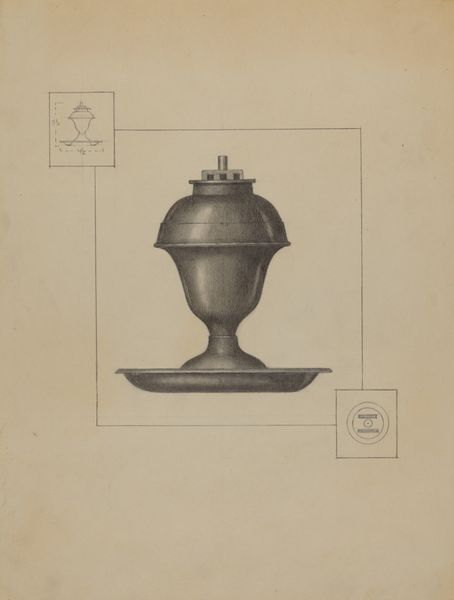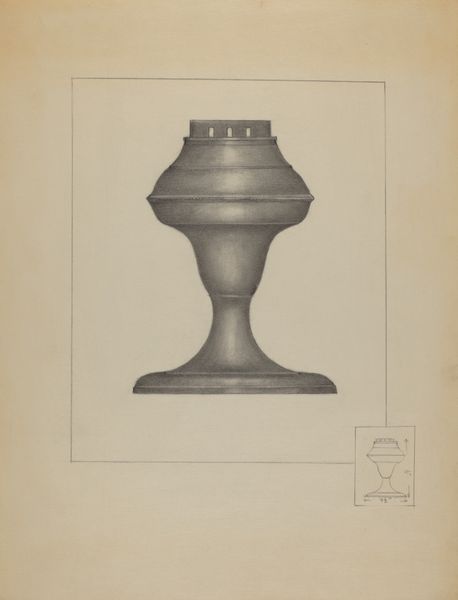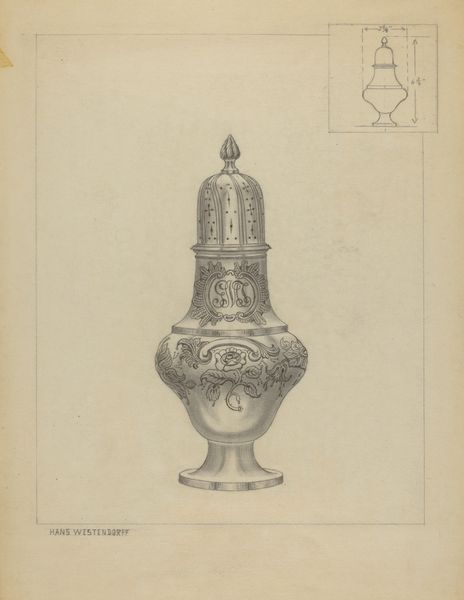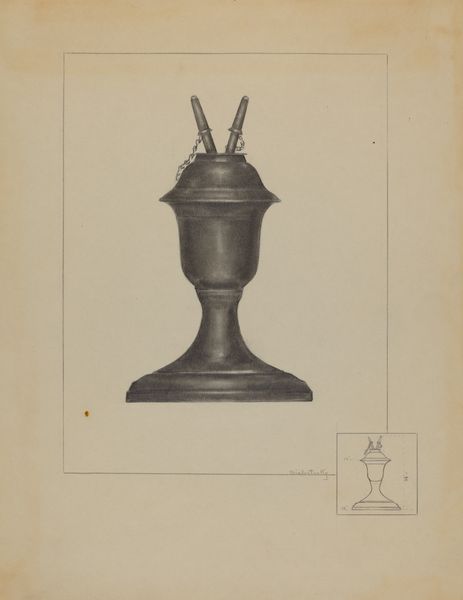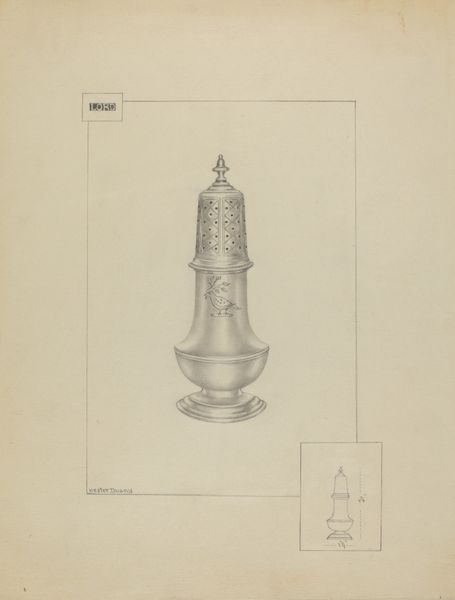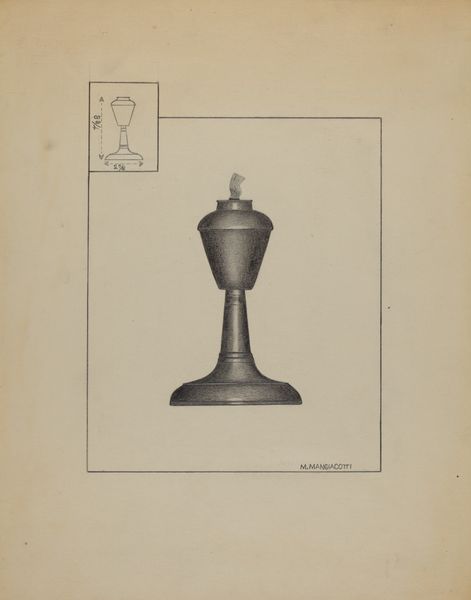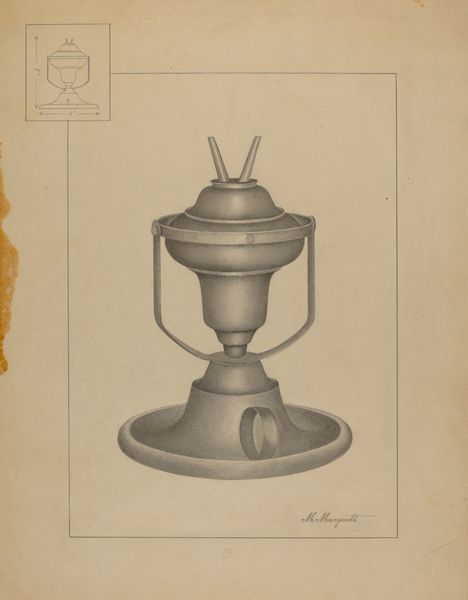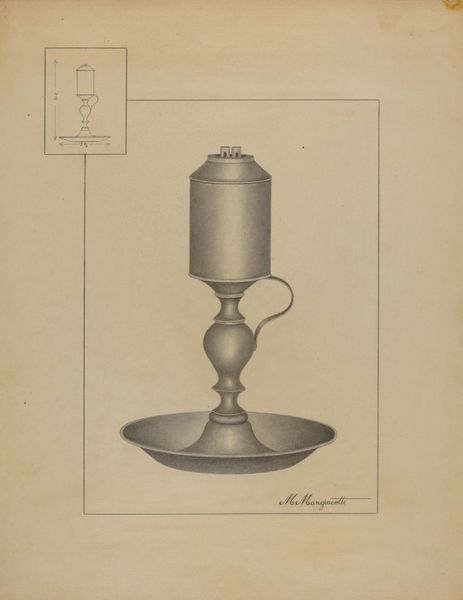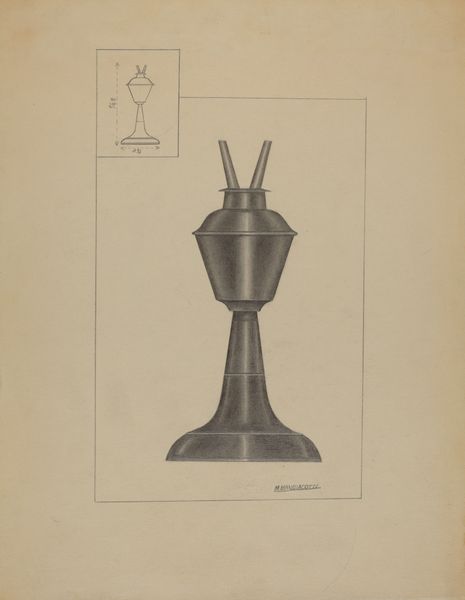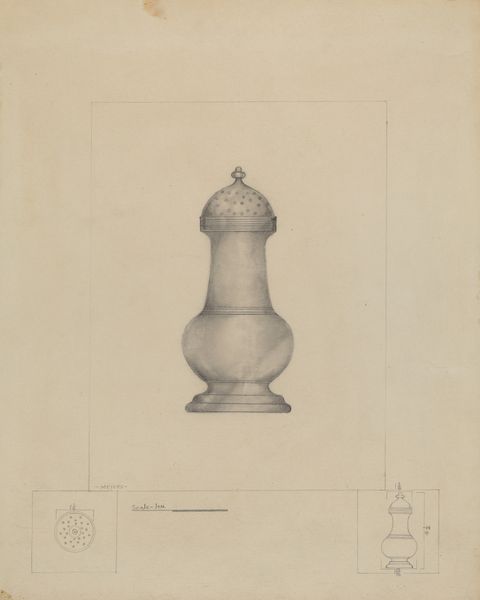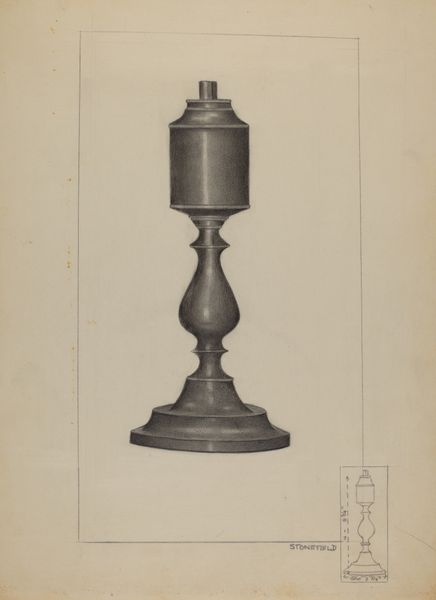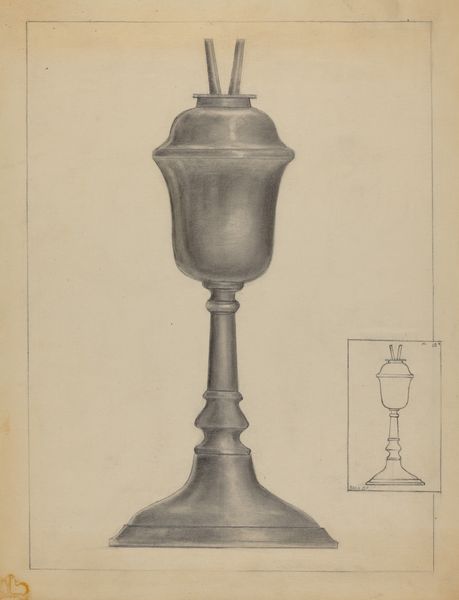
drawing, paper, graphite
#
drawing
#
paper
#
geometric
#
graphite
Dimensions: overall: 29.9 x 23.1 cm (11 3/4 x 9 1/8 in.) Original IAD Object: 3 9/16" high
Copyright: National Gallery of Art: CC0 1.0
Editor: Here we have Matthew Mangiacotti's "Lamp," a graphite on paper drawing from around 1939. There’s something so clinical about it, like a blueprint rather than a finished artwork. What historical contexts might shed light on this design? Curator: Good observation. The drawing style certainly evokes an industrial or architectural rendering, doesn’t it? Considering it was made around 1939, we should think about the social and political climate. This was a time when functionalism was heavily influencing design, and industrial production was on the rise with looming war efforts. Does the design strike you as streamlined? Editor: Definitely! It's purely geometric, simple and unadorned. So you're thinking the lamp's design aesthetic relates to a larger societal movement emphasizing efficiency and mass production? Curator: Precisely. And beyond the lamp itself, look at the presentation. A precisely rendered, technical drawing elevates a functional object, perhaps even subtly commenting on the burgeoning role of design within a consumerist society. Do you see that as a neutral act, or perhaps subtly critical? Editor: That’s interesting… Almost like the design itself becomes a symbol of mass-production values. I’m wondering about the public's appetite for geometric designs? Curator: An insightful question. This period witnesses growing acceptance and enthusiasm of this design ethos across socio-economic demographics because its integration in public projects. Think about how accessible streamlined lamps like this might be compared to more traditionally ornamented designs. Also, I wonder, why render a lamp this way at all? Perhaps Mangiacotti wanted it considered more than just an object to illuminate space. Editor: It makes you think about the role of art in shaping public perception and influencing culture, doesn't it? Curator: Absolutely. Examining the history, design and production shows how artworks actively engage in those societal narratives. Thanks! Editor: And thank you, I will be thinking about these industrial design choices!
Comments
No comments
Be the first to comment and join the conversation on the ultimate creative platform.
